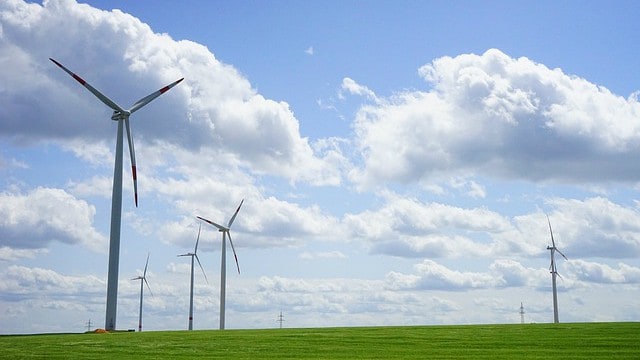Germany is one of the leading countries for green power generation. Over the holidays, the unseasonably warm weather in parts of Germany combined with windy conditions had factories making money to draw power off the grid. It’s hard to imagine this scenario in frigid Canada at the moment. The bottom line: with time, green infrastructure pays. Here’s some context: in the first half of 2017, Germany produced 35% of its power from renewable energy. Over the last 20 years, Germany has spent an estimated $200 billion to promote green energy.
Renewable energy in Canada is dominated not by wind, nor solar, but by hydroelectric dams. Keep in my mind, though, that Canadian wind energy is catching up. Here is a list of four companies with green-energy businesses.
| Symbol | Market cap ($ billion) | One-year return (%) | Dividend yield (%) | Price-to-sales ratio |
| BLX. | 1.8 | 17.4 | 2.6 | 4.6 |
| PEGI | 2.6 | 2.4 | 6.1 | 4.6 |
| INE | 1.6 | -0.5 | 4.6 | 4.2 |
| RNW | 3.3 | -14.3 | 6.9 | 7.0 |
Source: YCharts.com
Boralex Inc. (TSX:BLX) produces onshore wind power in Canada, the United States, and France. This stock has climbed steadily since 2011 and — without too much fanfare — had one of its best years in 2017 (an impressive 17% return). You will have to pay up for this stock, since it is generally priced with a high multiple; the price-to-earnings ratio (P/E) is quite high, arguably overvalued, even though the green-energy sector tends to have high P/Es . The flip side is that revenues continue to climb. This growth stock also pays a dividend, although it is smaller than the others on this list.
Pattern Energy Group Inc. (TSX:PEG)(NASDAQ:PEGI) produces electricity through wind power in Canada, the United States, and Chile. I covered this company previously, when I noted that a pension fund was a buyer.
Innergex Renewable Energy Inc. (TSX:INE) hopes to accelerate its growth profile now that the acquisition of its competitor, Alterra Power Corp., has gone through for $1.2 billion. Alterra shareholders saw substantive price appreciation as a result of the deal, while Innergex took a price hit. Innergex stock price was flat for 2017. If you like wind power, Innergex, and have a five-year time horizon, then a lower-risk income investment would be to buy either Innergex Series A or Series C Preferred Shares. These preferred shares pay over 5% yield through quarterly payments and will run for another few years.
TransAlta Renewables Inc. (TSX:RNW) produces energy through wind and hydroelectric dams as well as gas facilities, mainly in North America, but also Australia. The renewable business is tied to the sister company TransAlta Corporation.
Trading publicly since 2012, TransAtla Renewables had a disappointing year, dropping 14%, most likely due to poor profit margins relative to previous years and competitors.
I have reason to believe the bumps in the road could be over. One metric to highlight is the capital expenditures as a percentage of sales (capex-to-sales ratio); this metric was up ~70%, and with each year it has declined to current levels of 6%. Think: efficiency of sales! TransAlta Renewables has laid the groundwork to higher profitability. While waiting for things to turn around, you can collect a hefty 6.9% dividend.








